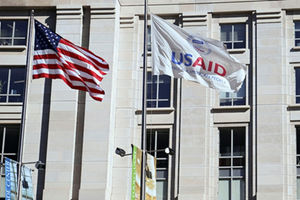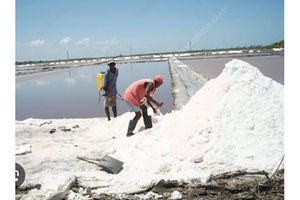Sisal farmers enjoy new technology on fibre production

A farmer harvests sisal. PHOTO|FILE
What you need to know:
Adoption of technology to both small entrepreneurs and farmers increase access to the market following the implementation of sisal cluster in Shinyanga.
Through the cluster, Sido create awareness for farmers and small entrepreneurs to team up produce one commercial crop in groups, before equipped with processing technology to add value and incomes.
Kishapu. For the past 10 years, sisal was used to make doormats and ropes to fasten cattle.
Some farmers simply planted it to fence off or separate their land from others in Kishapu District.
Others sold it but at low prices due to limited market for raw sisal.
However, the adoption of processing technology that adds value has improved the lives of the farmers who are now assured of the market, thanks to the Small Industries Development Organisation (Sido) support.
Through its cluster approach, Sido creates awareness to farmers and traders to team up and produce one commercial crop in groups, before equipping them with processing machines.
Currently, more than 100 sisal farmers have teamed and have been selling 40 tonnes of sisal annually.
They say prices have also improved from around Sh1,200 a kilo up to Sh2,800.
Kishapu Sisal Cluster (KSC) chairman Charles Bida told BusinessWeek that before forming the group, most of them grew sisal individually and strove to find their own markets.
“We used to sell sisal at between Sh1,000 and Sh1,200 a kilo, but now prices have increased to between Sh2,600 and Sh2,800,” he said.“Before, everyone used to sell sisal at his or her price and most of the time we used to sell through agents and therefore our earnings were poor.” KSC member Tabu Hashimu said the importance of growing and processing sisal could not be overestimated in creating jobs and alleviating poverty.
“Clusters are the way forward to help traders to enlarge their businesses,” said the acting manager for Sido’s Technology Development Centre in Shinyanga, Mr Ally Mtwale.
According to him, entrepreneurs who were involved in clusters increased production and quality.
A centre for processing sisal fibres has been established in Kishapu.
Some 24 people were trained on sisal fibre production.
Sisal used to Tanzania’s significant foreign exchange earner up to the 1970s. It provided employment to over 1 million permanent workers and casuals.
It is currently estimated that 350,000 of them are engaged in sisal farming.
According to the central bank, Tanzania exported 793 tonnes of sisal in the third quarter of 2016.
A senior quality assurance officer at the Tanzania Sisal Board, Mr Yunus Msika, projects production to reach 100,000 tonnes by 2021.
FAO indicates that demand for new products made from sisal has been growing at a fast rate in globally over the past decade.
It is estimated that by 2025 at least 100,000 tonnes of fibre will be needed in Tanzania alone.




